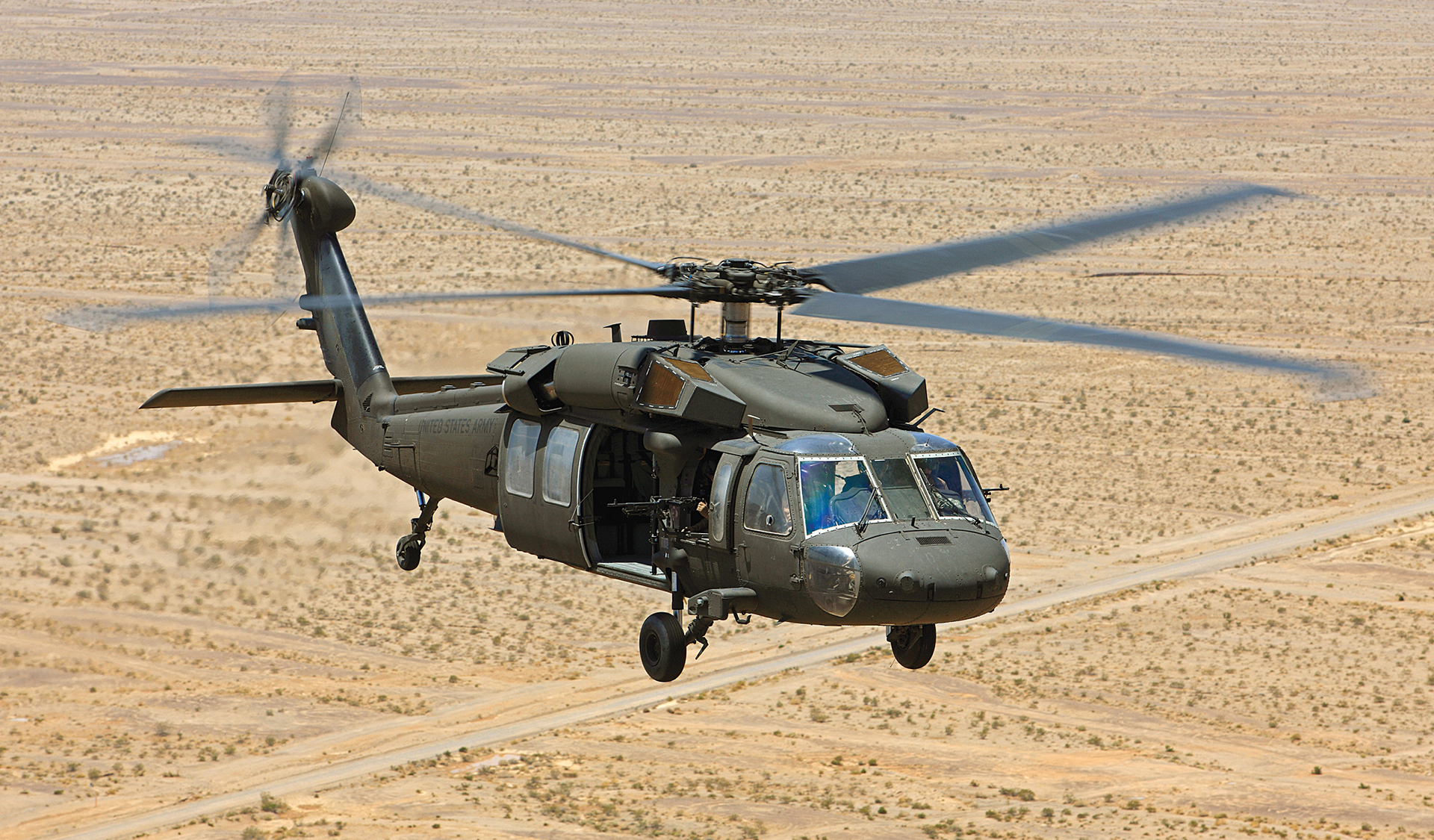UH 60 Helicopter Maintenance: A Comprehensive Guide for Pilots
UH 60 Helicopter Maintenance: A Comprehensive Guide for Pilots
Blog Article
Comprehending the Mechanics and Engineering Behind Uh 60 Helicopters
The UH-60 helicopter, frequently known as the Black Hawk, stands as a pinnacle of modern rotorcraft technology, embodying a blend of robust design and intricate technicians. As we peel back the layers of the UH-60's design, a world of detailed systems and careful engineering comes to light.
History of UH-60 Helicopters
The background of UH-60 helicopters traces back to the late 1970s when the USA Army sought a advanced and functional utility helicopter to change its aging fleet. In action to this need, the Sikorsky Aircraft Company established the UH-60 Black Hawk helicopter. Presented in 1979, the UH-60 swiftly came to be a staple in armed forces procedures due to its outstanding capabilities.
The UH-60 was made to master a selection of objectives, consisting of troop transport, clinical evacuation, electronic war, and unique procedures. Its ability to adapt to different functions made it a valuable asset to the U.S. uh 60. Army and various other army forces all over the world
Throughout the years, the UH-60 system has actually undertaken several upgrades and variations to boost its efficiency and equal developing objective requirements. These helicopters have actually seen extensive service in conflicts such as the Gulf War, Afghanistan, and Iraq, showcasing their integrity and adaptability in varied operational environments. The UH-60's rich history is a testimony to its enduring legacy as a leading utility helicopter.

Engine and Power Solutions
Making use of advanced propulsion modern technology, UH-60 helicopters are geared up with sophisticated engine and power systems to make sure optimum efficiency and dependability in an array of operational scenarios. The UH-60, generally called the Black Hawk, is powered by 2 General Electric T700-GE-701D engines, each with the ability of providing up to 1,940 shaft horsepower. These turboshaft engines offer the essential thrust for the helicopter to accomplish its missions properly, including army transportation, medical discharge, and fight support.

Rotor System and The Rules Of Aerodynamics
How do the rotor system and the rules of aerodynamics of UH-60 helicopters add to their operational effectiveness and trip capabilities? The blades system of the UH-60 helicopter plays a critical duty in providing lift and propulsion. The UH-60 features a four-bladed, completely articulated rotor system that permits high maneuverability and stability during flight. This layout enables the helicopter to execute a variety of missions, from transport and medical emptying to battle procedures.
Aerodynamics additionally play a crucial function in the efficiency of UH-60 helicopters. The structured body and blades blade layout reduce drag, enabling the helicopter to accomplish higher rates and much better gas efficiency. The wind resistant design of the UH-60 also contributes to its ability to run in varied ecological problems, including hot temperature levels and high altitudes.
Avionics and Flight Control Systems

In its complex control with the blades system and the rules of aerodynamics of UH-60 helicopters, the avionics and flight control systems create a vital network of modern technologies shaping the airplane's operational capacities. In the UH-60, these systems consist of digital display screens, interaction radios, General practitioner navigation, weather radar, and auto-pilot systems.
The flight control systems of the UH-60 are accountable for converting the pilot's inputs into the proper changes to the blades system, making sure stable flight and get redirected here ability to move. These systems are composed of hydraulic actuators, servos, and computer systems that interact to regulate the major and tail blades, along with various other flight control surfaces. By precisely taking care of the helicopter's trip dynamics, these systems make it possible for pilots to perform a large array of goals, from transport and search-and-rescue to deal with procedures, with accuracy and self-confidence.
Role and Applications in Aeronautics
Avionics systems in UH-60 helicopters encompass an array of electronic systems that help in navigation, interaction, monitoring, and managing various airplane features. These systems include electronic displays, auto-pilot systems, communication radios, General practitioner navigation devices, and weather radar. Furthermore, these systems include safety and security functions site link such as auto-pilot modes, surface recognition cautioning systems, and security enhancement systems to enhance the general safety and security and operational abilities of the UH-60 helicopters in numerous goals, consisting of army transport, medical evacuation, search and rescue, and aerial firefighting.
Verdict
To conclude, the UH-60 helicopter is a functional airplane with a rich history and advanced design. Its engine and power systems, rotor system, the rules of aerodynamics, avionics, and flight control systems all interact to make it a trustworthy and efficient machine. The UH-60's function and applications in aeronautics are large, ranging from army procedures to look and rescue missions. Its continued development and usage demonstrate its significance in the field of air travel (uh 60).
In its elaborate sychronisation with the blades system and the rules of aerodynamics of UH-60 helicopters, the avionics and trip control systems develop a crucial network of technologies forming the airplane's functional capacities.The trip control systems of the UH-60 are accountable for equating the pilot's inputs into the appropriate modifications to the rotor system, guaranteeing stable trip and ability to move. Avionics systems in UH-60 helicopters include a variety of digital systems that aid in navigation, communication, surveillance, and regulating different aircraft functions. Additionally, these systems include safety and security functions such as autopilot settings, surface understanding cautioning systems, and stability enhancement systems to improve the overall safety and security and functional abilities of the UH-60 read the full info here helicopters in various goals, including army transportation, medical discharge, search and rescue, and airborne firefighting.
Its engine and power systems, rotor system, the rules of aerodynamics, avionics, and flight control systems all function with each other to make it a dependable and effective equipment.
Report this page